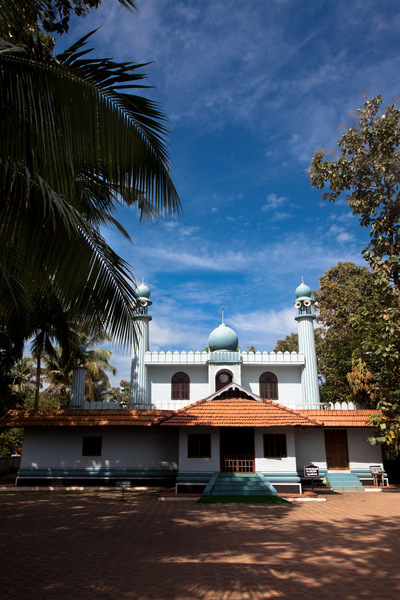  
|
|
Islamic Culture and India
by Muhammad Shafeeque http://www.islamicpluralism.org/2609/islamic-culture-and-india
Succeeding the civilizations of Babylonia and Egypt, Arabia was the major link between India and the Hellenistic world. Indo-Arab trade had an inevitable part in building the marvelously-diverse Indian culture. Jawaharlal Nehru, the 20th century political leader of India, stated in his 1946 book The Discovery of India: "This frequent intercourse inevitably led the Indians getting to know the new religion, Islam. Missionaries also came to spread this new faith and they were welcomed". A Hindu king of the Chera Empire in Kerala, southwest India, is said to have embraced Islam after he went to Mecca and met Prophet Muhammad (pbuh). Today Muslims are well-established in India, with 14.2 percent of the total population, or about 172 million people, enumerated in the 2011 census. According to academic sources, Muslims first raided India in 712 CE under the leadership of Muhammad Bin Qasim, in what was later known as the 'Arab conquest of Sindh'. Invasion was not an unfamiliar experience for India as it had been accomplished by such Central Asian forces as the Indo-Greeks and Sakas, among others. All these elements were dissolved in the Hindu culture so long sustained in the land. But the culture and tradition of Islam had a great impact on India, in a process of acculturation. Evolution of Sufism and new thought The Sultanate period, the Mughal dynasties, and their contributions to India can only be understood in the context of Sufism. Khwaja Moinuddin Chishti (1141-1236) came from Khorasan and was the first, outstanding Sufi saint known in Indian history. He remains a shelter for Indian people irrespective of religious boundaries. He was followed by Khwaja Fariduddin Ganj-e-Shakar (1179-1265), known as Baba Farid, and highly honored by Sikhs. Eminent scholars and Islamic preachers in this Sufi chain included Nizamuddin Auliya (1238-1325).
In the 13th century CE, the country witnessed the emergence of one of the most influential Sufi orders, the Suhrawardhiyya under the guidance of Sheikh Bahauddin Zakariyya (1170-1267). There were fourteen Sufi orders in the country during the 15th century CE, as mentioned by the eminent historian and writer Abul Fazl (1551-1602). Later, the Qadriyya order was introduced, according to some sources, by Shah Nimatullah Wali (1130-1231), and the Naqshbandi order by Khwaja Baqi Billah (1564-1603). In the ranks of Hindus and later Sikhs, the spiritual Bhakti movement in India was a blessing for the Sufi saints. The Bhakti phenomenon took inspiration from the Bhagavad Gita and Upanishads. The Sufi saints placed those texts on a firmer ground of acceptance. The Bhakti movement gained momentum in the 11th and 12th centuries with the rise of Sufi culture in the country. Hindu scholars were explicitly influenced by aspects of Sufism, like its concentration on 'one god', which resulted in the emergence of many religious reformers in the country. The Sultanate and Mughal empire were highly dependent on these Sufi orders in the development of their culture. Language, literature, and painting During the Sultanate period, the Persian, Arabic and Turkish languages were mingled with the Indian languages. Many Sanskrit works were translated into Persian during this period. Furthermore, Persian was the court language in the Mughal Empire. All rulers were expert in the linguistic field and they exerted their maximum effort for the dissemination of literature. The Muslim traveler Ibn Batuta (1304-68/69) journeyed in India during the period of Delhi sultan Muhammad bin Tughluq (d. 1351). Babur (1483-1530), founder of the Mughal empire, was a great author, known for his Baburnama, as 'prince of autobiographers'. Akbar (1542-1605) promoted the Persian language with Abul Fazl as one of his viziers. During the reign of the 15th c. CE sultan of Kashmir, Zain-ul Abidin, the ancient Mahabaratha was translated into Persian. Indeed, Allama Muhammed Iqbal (1877-1938) was a superlative product of this tradition, and was influenced strongly by Sufism. Indian painting has a history spanning more than two thousand years. The decorations in the Ajanta cave created during the Gupta empire (4th-6th centuries CE) are evidence for the historical achievements of Indian painting. In the Mughal period Indian painters were introduced to new concepts elaborated by Islamic artists. In conclusion, the penetration of India by Islamic culture reinforced the excellence of existing, pre-Muslim achievements. Muhammad Shafeeque is enrolled in a special intensive course in classical Islamic studies from Madeenathunnoor College of Islamic Science, Kozhikode, Kerala, India. His areas of interest are Quranic science, translation, theology, jurisprudence, and contemporary Islamic thought. Related Topics: British Muslims, Central Asia, Pakistan, Sufism receive the latest by email: subscribe to the free center for islamic pluralism mailing list |
Related Items Latest Articles |
|||||
|
© 2025 Center for Islamic Pluralism. home | articles | announcements | spoken | wahhabiwatch | about us | cip in the media | reports external articles | bookstore | mailing list | contact us | @twitter | iraqi daily al-sabah al-jadid |
||||||

